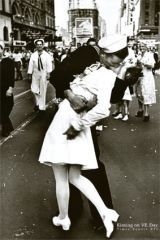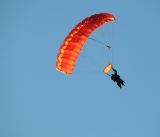- Forum
- General Discussion | Introductions | Off Topic Forum
- Photography General Discussion
- Telescopes and Camera lenses?
Telescopes and Camera lenses?
-
 Topic Author
Topic Author
- Homer
- Snapobsessed
-
- Nikon D300
- Followers: 92
- Posts: 289
-
Points:
271
Post #166273
From what he mentioned there are a few brands that are very good and he goes if you purchase other brands, they might be less expensive, you just don't get the same optical qualities. This he said will make a big difference when you are going to be taking photos of objects that are hundreds of thousands of miles away from you.
3 brands to look for as he said are "Meade, Celestron and Vixen"
Now what I didn't ask him and I was hoping someone might be able to answer for me, is if the telescope optical system is manufacture the same as a normal camera lens, just larger? Do the optics work the same?
Back to my search.
Homer
-

- KCook
- Photo Elder
-
- Canon EOS 50D and Olympus E-P5
- Followers: 1325
- Posts: 5410
-
Points:
32913
Post #166310
www.photographytalk.com/forum/photograph...pe-with-camera-mount
Kelly Cook
-
 Topic Author
Topic Author
- Homer
- Snapobsessed
-
- Nikon D300
- Followers: 92
- Posts: 289
-
Points:
271
Post #166315
KCook wrote: In addition to lenses, telescopes use a big mirror. This mirror is also glass, but the details of its fabrication are different from a lens, especially for the big mirrors for telescopes for research. More thoughts on this thread -
www.photographytalk.com/forum/photograph...pe-with-camera-mount
Kelly Cook
Thank you Kelly, I missed that thread during my search here.
-

- Monti Leehsu
- Lone Wolf
- Nikon D300
- Followers: 22
- Posts: 172
-
Points:
446
Post #166317
-

- KCook
- Photo Elder
-
- Canon EOS 50D and Olympus E-P5
- Followers: 1325
- Posts: 5410
-
Points:
32913
Post #166353
There are 3 flavors: Prime focus places the DSLR sensor at the focus for the telescope itself (without any eyepiece). Some telescopes cannot do this because the focus location is inside the telescope hardware, inaccessible to the DSLR. There is also the projection type, where either an eyepiece or a Barlow lens is used to project the focus further back, this usually magnifies the image, requires some extra hardware obviously. Finally there is the option of putting the DSLR, with a camera lens in place, up to the eyepiece. That last technique is the only one that will work with any telescope, even one with a fixed eyepiece, such as a simple spotter scope. See more info on this site -Monti Leehsu wrote: How does a camera mount to one of these? Can't be the same as the existing eye piece or would it? If that being the case do you look though the telescope though your camera's viewfinder?
Connecting Camera to Telescope
Kelly
-

- I shoot RAW
- Snapobsessed
-
- D700 and D7000
- Followers: 78
- Posts: 425
-
Points:
2918
Post #166715
KCook wrote:
There are 3 flavors: Prime focus places the DSLR sensor at the focus for the telescope itself (without any eyepiece). Some telescopes cannot do this because the focus location is inside the telescope hardware, inaccessible to the DSLR. There is also the projection type, where either an eyepiece or a Barlow lens is used to project the focus further back, this usually magnifies the image, requires some extra hardware obviously. Finally there is the option of putting the DSLR, with a camera lens in place, up to the eyepiece. That last technique is the only one that will work with any telescope, even one with a fixed eyepiece, such as a simple spotter scope. See more info on this site -Monti Leehsu wrote: How does a camera mount to one of these? Can't be the same as the existing eye piece or would it? If that being the case do you look though the telescope though your camera's viewfinder?
Connecting Camera to Telescope
Kelly
Good post Kelly
Wasn't me
-

- KCook
- Photo Elder
-
- Canon EOS 50D and Olympus E-P5
- Followers: 1325
- Posts: 5410
-
Points:
32913
-
 Topic Author
Topic Author
- Homer
- Snapobsessed
-
- Nikon D300
- Followers: 92
- Posts: 289
-
Points:
271
-
 Topic Author
Topic Author
- Homer
- Snapobsessed
-
- Nikon D300
- Followers: 92
- Posts: 289
-
Points:
271
-

- Nunya
- Lone Wolf
-
- Nikon D300
- Followers: 8
- Posts: 211
-
Points:
0
Post #167014
Monti Leehsu wrote: How does a camera mount to one of these? Can't be the same as the existing eye piece or would it? If that being the case do you look though the telescope though your camera's viewfinder?
Here's a good video that shows that:
Don't look at me, I didn't do it
Post #171032
Homer wrote: So I went into the telescope store on Tuesday and have to say the rep was at first rude and wasn't to helpful in educating me on the differences between the telescopes they had and which would be good for astrophotography. I started to leave and the manager stepped in and started to point out the differences between the telescopes. I think he wasn't to happy with working with the store and mentioned that if I wasn't in a rush to shop around online that there was better prices. I thought that was nice of him.
From what he mentioned there are a few brands that are very good and he goes if you purchase other brands, they might be less expensive, you just don't get the same optical qualities. This he said will make a big difference when you are going to be taking photos of objects that are hundreds of thousands of miles away from you.
3 brands to look for as he said are "Meade, Celestron and Vixen"
Now what I didn't ask him and I was hoping someone might be able to answer for me, is if the telescope optical system is manufacture the same as a normal camera lens, just larger? Do the optics work the same?
Back to my search.
Homer
Vixen telescopes are one of the best you can get, but you will pay a little extra
- Forum
- General Discussion | Introductions | Off Topic Forum
- Photography General Discussion
- Telescopes and Camera lenses?
Latest Reviews
The Olympus Pen E-P7 is an affordable micro four thirds mirrorless camera with 4K video capabilities, a 20.3MP sensor, and 121 focus points, making it a solid entry-level camera for beginners.
The Panasonic G9 II is a 25.2-megapixel micro four thirds camera with numerous features that make it punch out of its weight class, like 779 AF points, 5.8K video, and weather sealing.
The Fujifilm XT5 is a 40MP mirrorless camera capable of 6.2K video at 30p. With those specs, it’s an ideal choice for photographers needing a camera to pull double duty for imaging and video.
The Canon EOS R100 is an entry-level mirrorless camera introduced in 2023. But just because it’s an entry-level camera doesn’t mean it’s a bare-bones camera. Find out why in this review!
Forum Top Posters
-
1Scotty 9 posts
-
2Roman Omell 4 posts
-
3Ruby Grace 4 posts
-
4TCav 4 posts
-
5Razky 4 posts
-
6Roger Lang 3 posts
-
7Nefarious 3 posts
-
8CharleyL 3 posts
-
9ShutterPal 3 posts
-
10Pat White 3 posts
Latest Articles
Upgrade your kit in 2024 with the best intermediate camera on the market! The question is, what camera fits the bill? We’ve got three top options for you to choose from in this buyer’s guide.
The best photography jobs right now are a mix of tried-and-true gigs like wedding photography and new jobs highlighting AI’s capabilities, travel, and videography.
The Olympus Pen E-P7 is an affordable micro four thirds mirrorless camera with 4K video capabilities, a 20.3MP sensor, and 121 focus points, making it a solid entry-level camera for beginners.
Starting a photography business is one thing; sustaining your business over a long period of time is another. Use the tips in this professional photography guide to build something with longevity!
The Panasonic G9 II is a 25.2-megapixel micro four thirds camera with numerous features that make it punch out of its weight class, like 779 AF points, 5.8K video, and weather sealing.
Cinematic photography is an interesting genre that combines photographic and videographic skills along with effective storytelling techniques. The result? Highly impactful images!
Newborn photography requires skill, the right gear, and a lot of patience. This beginner’s guide discusses critical topics that will help you be more prepared for before, during, and after the shoot.
To fill the frame means to expand the footprint of the subject in your shot. Get in close, zoom in, crop the image, or use other techniques to bring the subject to the forefront.















